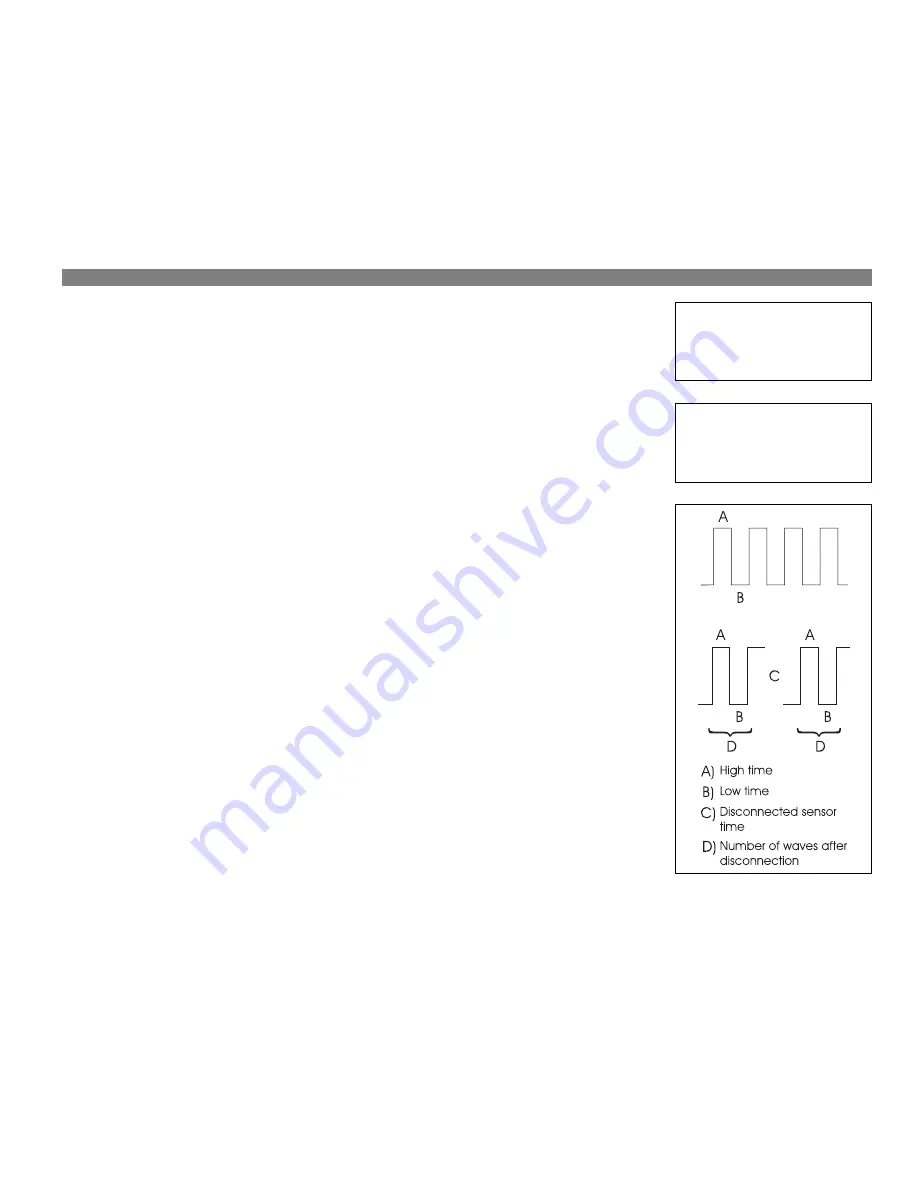
DATA SETTING
10
Landi Renzo S.p.A.
HIGH TIME
0.36 SEC
fig.22
SIMULATION TYPE
(fig. 21)
SQUARE WAVE: supplies the vehicle’s computer, when running on gas, with a similar signal to the one received
from the lambda sensor when running on petrol.
The square wave, set in the factory, is suitable for most vehicles on the market.
Not all computers interpret the signal in the same way. Therefore, it is possible for the same signal to work well on
one car and not so well on another.
If the simulated signal is not compatible, there could be irregular operation on petrol, and the check-engine indicator
light might come on.
To solve this trouble the possibility has been provided of setting an appropriate signal indicated from time to time
by the
LANDI RENZO technical service.
DISCONNECTED: supplies the car computer with a disconnected lambda sensor signal.
Some computers on receiving the disconnected lambda sensor will ignore it, leaving the carburation on petrol
unaltered and engine check light switched off. This type of emulation generally works on cars of old design.
GROUND: supplies the car computer with information of a constantly lean mixture, it is used on MONO-BOSCH
systems.
SQUARE WAVE SIMULATION
By selecting the square wave type of emulation it is possible to set the parameters indicated below (fig. 23); change
these parameters only by following the instructions of the
LANDI RENZO technical service.
HIGH TIME: the time of the signal emulating a rich mixture (fig. 22).
LOW TIME: the time of the signal emulating a lean mixture (fig. 24).
DISCONNECTED SENSOR TIME: the time passing between one set of pulses and the next (fig. 25).
NUMBER OF WAVES AFTER DISCONNECTION: the number of waves that will be sent to the petrol computer
after the disconnected sensor time (fig. 26).
SIMULATION
TYPE
SQUARE WAVE
fig.21
fig.23


































